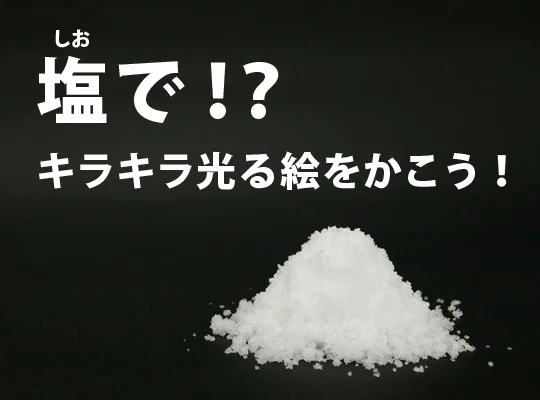

【Observation】Delicious Fun Facts from the Sea: About Clams
Observation
Delicious Fun Facts from the Sea: About Clams
In this "Let's Try" section, we'll introduce some tips for observing live clams. After having fun watching them with your family, don't forget to enjoy eating them, too!
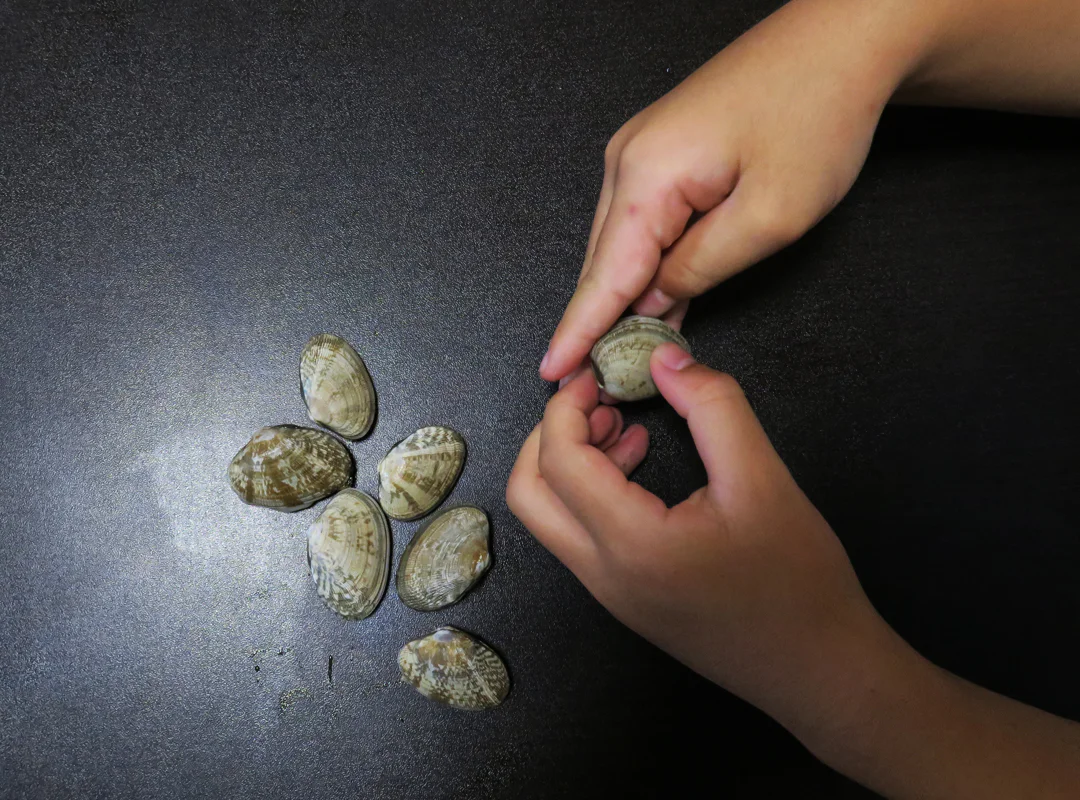

And now, it's time for our "Let's Try" section. This time, we'll observe real clams at home. Make sure to do it with your family.

Okay!

Now, please prepare the following items. If you get live clams with shells from the supermarket, you can use them for observation.
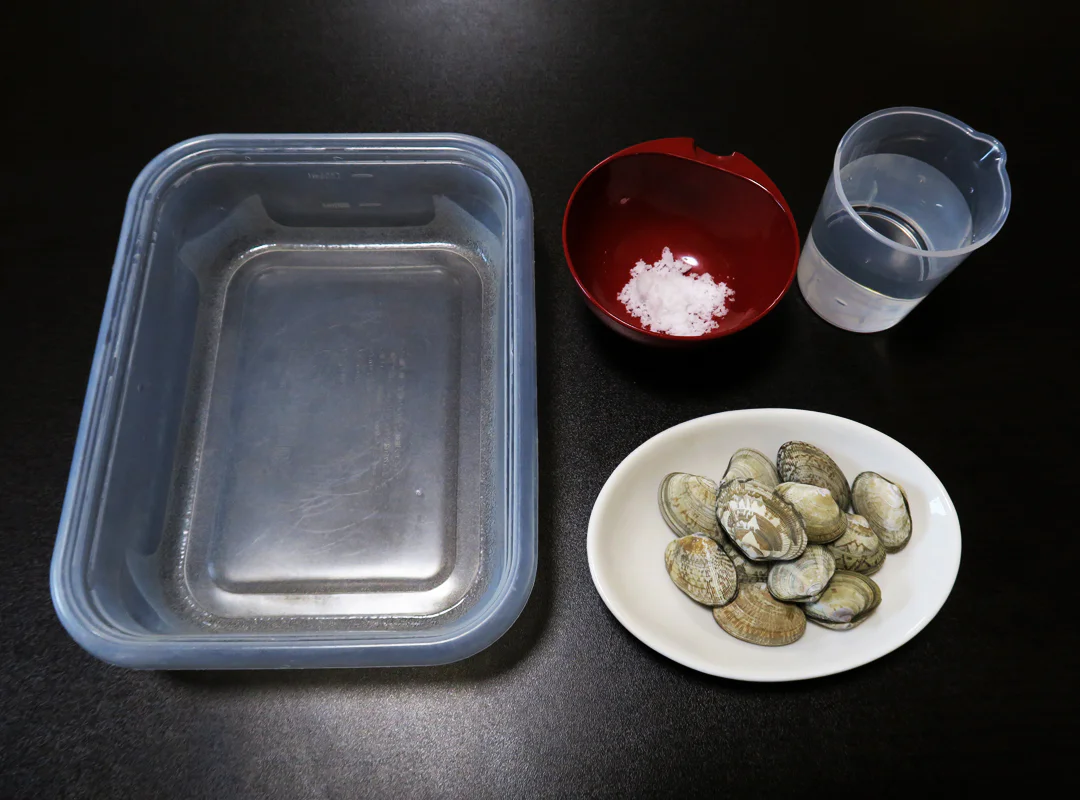
What you need: live clams, a tray, salt (1 teaspoon = 6 grams), and 150 ml of water.

I'm getting excited!

First, to see how the clam moves, let's make some saltwater.

Can't we just use regular water?

Ah-ha! Clams live in the sea, right? Seawater has salt dissolved in it. That's why we need to make saltwater!

Wow, my older brother just popped up all of a sudden!

That's because I know all about salt!
If you want to learn more about salt and saltwater, check out "Using Salt!? Let's Draw Sparkling Pictures"
Bye, see you!
If you want to learn more about salt and saltwater, check out "Using Salt!? Let's Draw Sparkling Pictures"
Bye, see you!

Wow, he's already gone.

That was quick!
But what he said is right. We make saltwater to match the seawater that clams live in.
But what he said is right. We make saltwater to match the seawater that clams live in.

I see.

Add 1 teaspoon (6 grams) of salt to 150 ml of water, and stir until the salt dissolves.
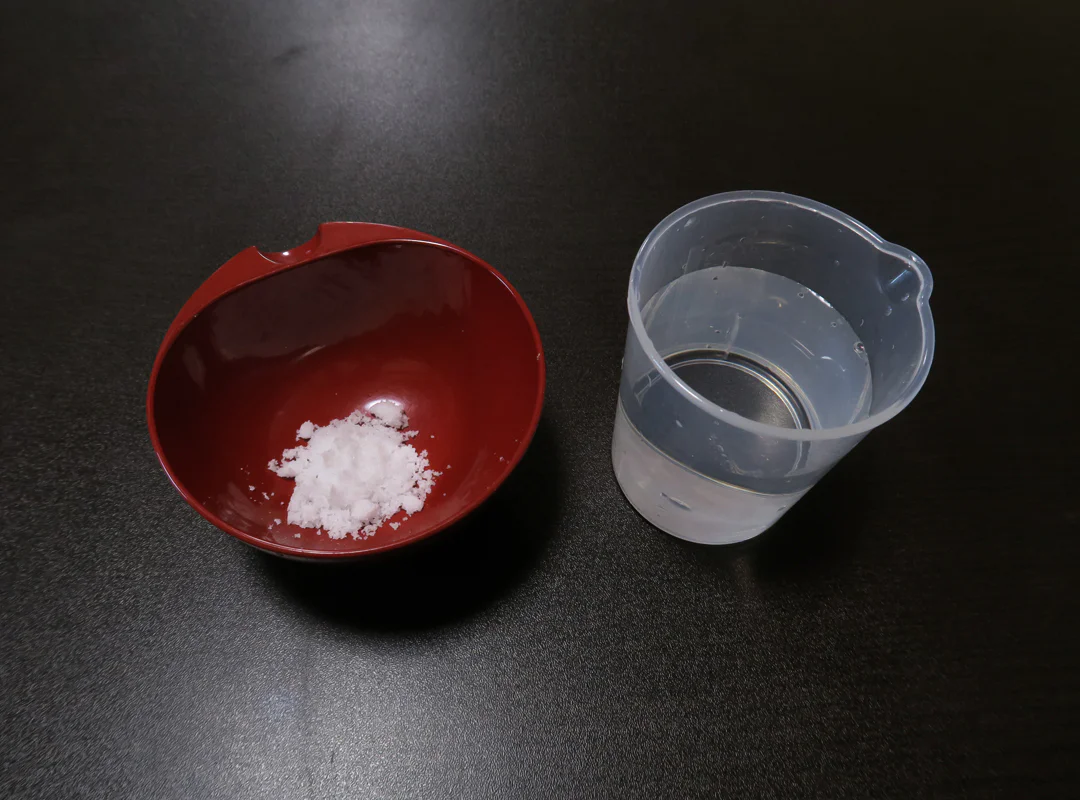

Okay!

Once you've made the saltwater, next put the clams in a shallow tray. Add saltwater just enough so the clams stick their heads out a little.
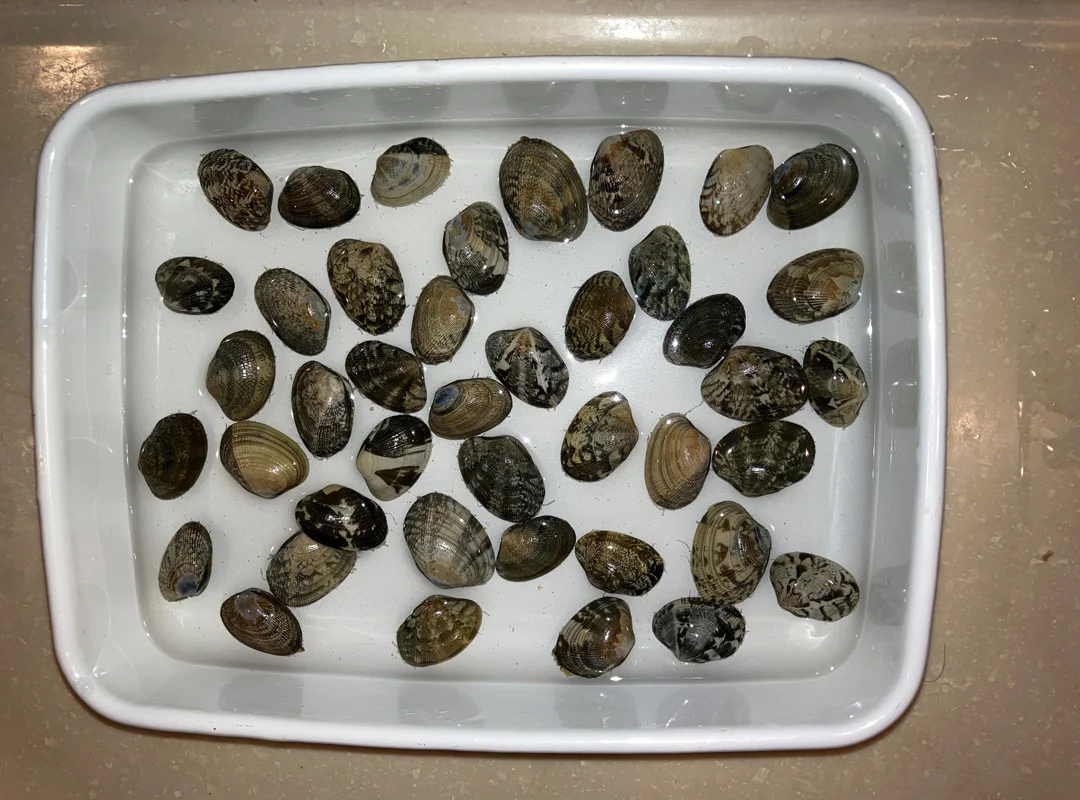

Be careful not to add too much saltwater. After that, place the tray in a dark place, or cover it with aluminum foil to keep it dark.
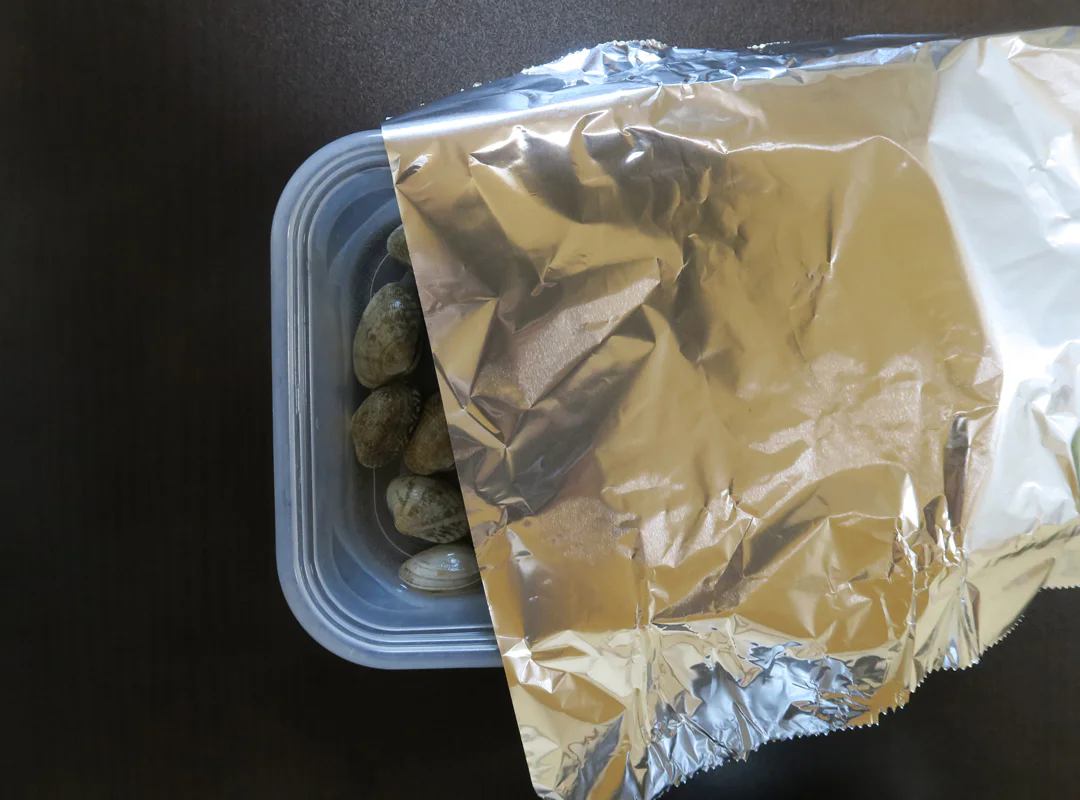

Oh, their eyes are coming out!
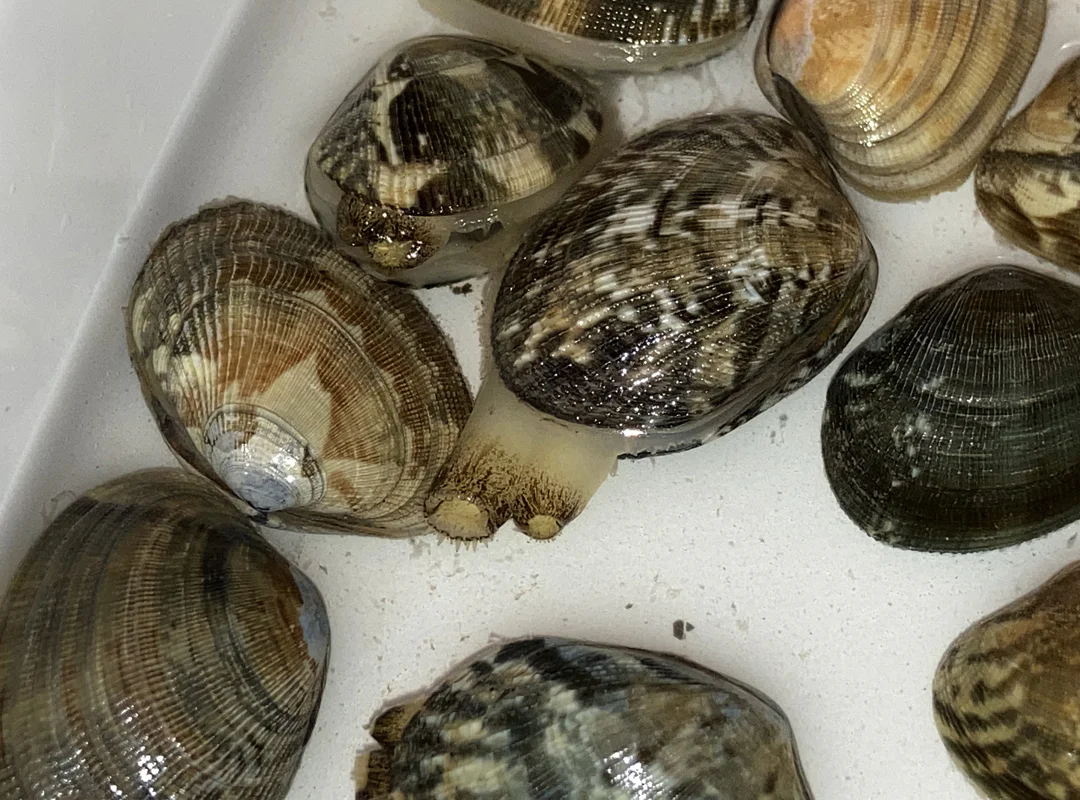

Are those their eyes?
If you forgot, you can go back to the "Let's Look" section.
If you forgot, you can go back to the "Let's Look" section.

Oh, that's right. This is where they take in and push out seawater, right?

Yes, exactly!

Clams don't have "eyes," but they do have "feet." Let’s watch the next video. The part that's moving on the opposite side of the siphon is its foot.

Wow, it moves faster than it looks!

If you observe carefully, you can also see seawater being pushed out from the siphons.

Wow, it splashed!

Now, try holding a clam and opening its shell.


Whoa, it all pulled back! And it won't open at all.
*Sometimes, if the clam is weak, you might be able to open it by hand.

Even adults find it hard to open the shell of a live clam without tools.

That’s because the adductor muscles hold the shell tightly, right?

Amazing! You remember everything you learned in the "Let's Think!" section!!

It's no big deal.

Now, let’s finish observing the live clams for now. Next, let's do the observation after your family cooks some delicious clam dishes.

Okay! I can't wait to eat them!

This time, we made clam miso soup and paella. Any dish will work, as long as you use the clams in their shells!
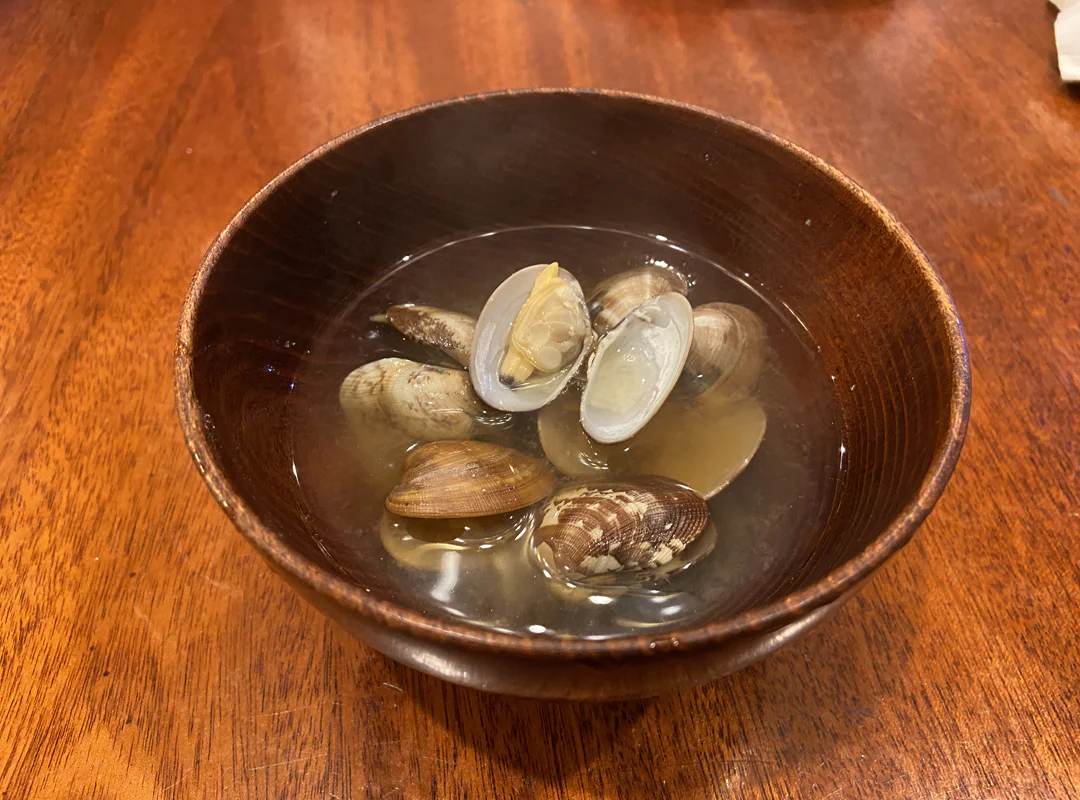
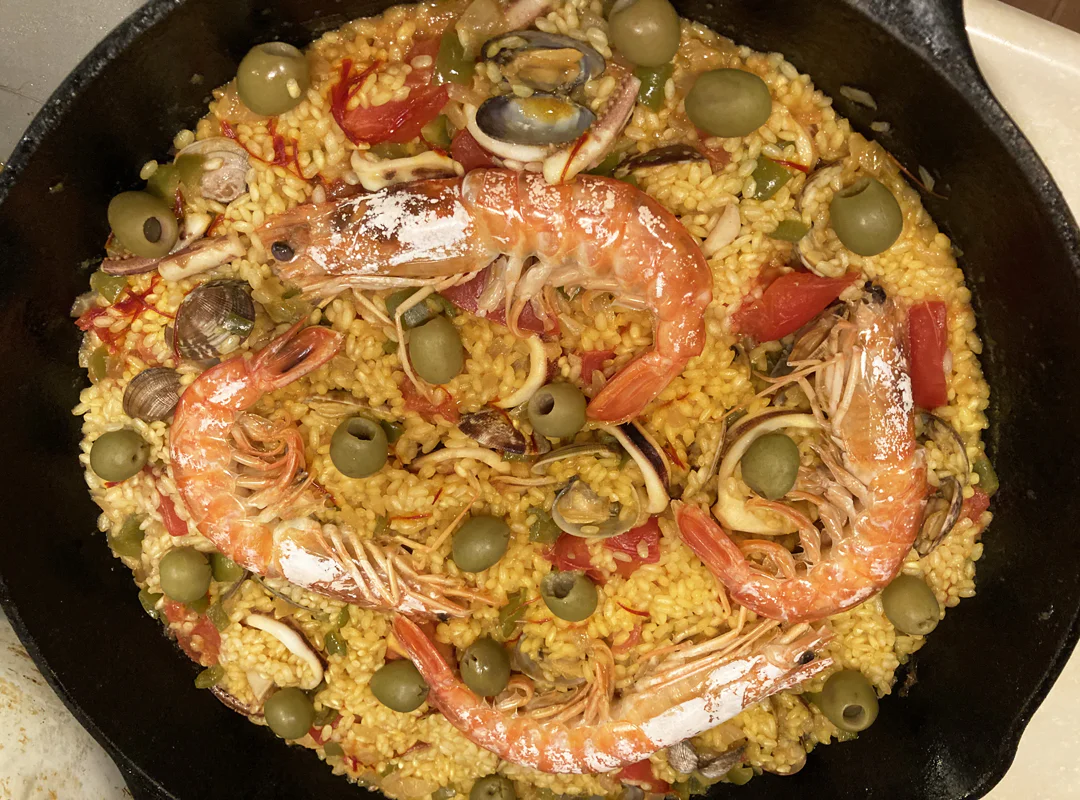

Okay!

Did the clams look different before and after cooking?
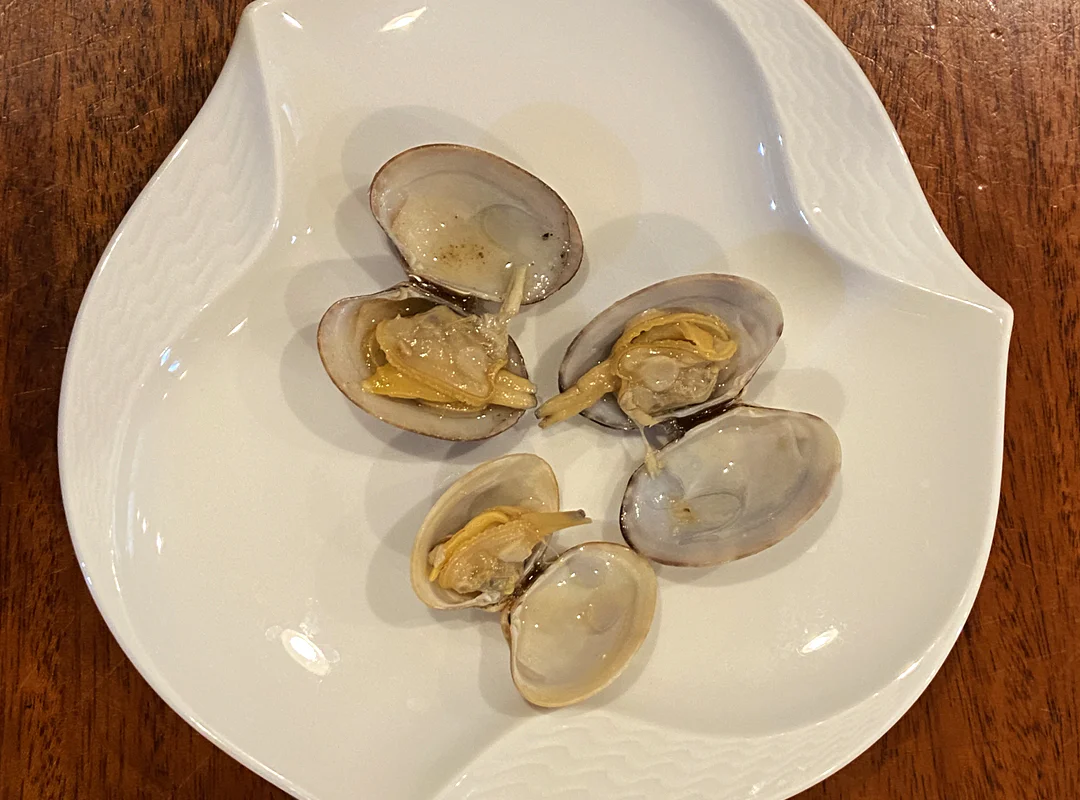

The shells opened up, and now I can see what's inside!

That's right. The shells that even adults couldn't open have opened. Now, hold the shell part and lift it up.


Hey, the shell is open, but the inside isn't falling out.

Why doesn't the inside fall out?

Is it because the adductor muscle is holding the shell and the clam's body together?

Yes, that's exactly right. Even when the shell opens, the adductor muscles stay attached to the shell.

That can make it tricky when you want to eat.

When eating clam meat, press the adductor muscles from the side to separate it from the shell. Then you can easily eat the whole clam.

Wow, you're right. It came off perfectly!

You did a great job!
How does it taste?
How does it taste?

It's delicious! (munch, munch)

I'm getting full, so maybe it's time to wrap up.

(munch munch) Thank you so much, Sensei! (munch munch)

Be careful not to eat too much!

Okay!
We asked a researcher at KAHAKU!

This time's "Kahaku Expert"
Hiroshi Saito
(Senior Curator, Division of Marine Invertebrates, Department of Zoology)
Hiroshi Saito
(Senior Curator, Division of Marine Invertebrates, Department of Zoology)
Well, we're not exactly sure yet. Some of the colors come from traits passed down from their parents, and it's also said that where they live can affect their colors.
They're said to live for about 7 or 8 years. But some clams live much longer. For example, the Icelandic clam, which lives in the deep North Atlantic Ocean, can live over 300 years! There's even a record of one living for 507 years.
